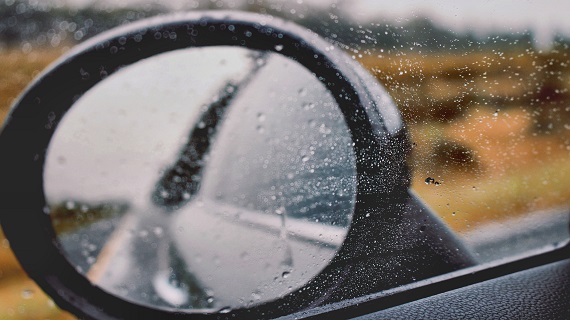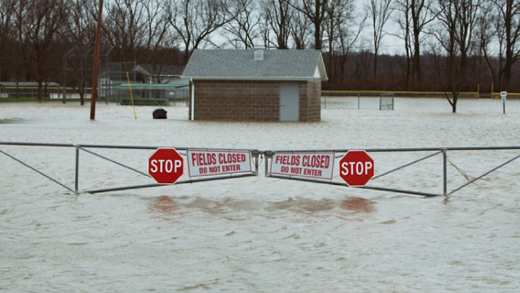Extreme weather can have a serious impact on your driving – with rain, fog, wind, snow and ice all affecting the conditions of the road.
Here's our guide to staying safe on the road – whatever the weather.
Rules of the road
- Reduce your speed
- Increase the distance between you and the vehicle in front
- Drive smoothly, without sudden acceleration or braking

Driving in wet weather
Here in the UK, we're used to the rain – so many don’t consider it a risk. But driving on wet roads can affect your ability to stop as well as the car's traction on the road Footnote [1].
In wet weather, remember to increase the gap between you and the car in front to around 4 seconds – so you don't run out of road if you brake suddenly.
How do I drive on a flooded road?
When driving through big puddles or flooded areas, stay in first gear with the engine speed high and drive very slowly. Don’t drive through floodwater if a vehicle is coming the other way.
Can floods affect your brakes?
Yes. Driving through puddles or on flooded roads can stop your brakes working properly. Test your brakes immediately after driving through water by driving slowly over a flat surface and pressing the pedal gently.
Driving in mist and fog
Because fog makes it harder to see, you should slow down and turn on your fog lights (remembering to turn them off once the fog lifts).
If visibility is extremely poor and you can’t see more than 100 metres ahead of you, you’ll need to switch on your normal headlights too.
Driving in snow and ice
Snowy and icy roads are at their most hazardous as the ice begins to thaw, leaving uneven surface water which reduces your car's grip on the road.
Use the highest gear possible to avoid wheel spin, but make sure your speed doesn’t creep up. Remember to use your brakes gently too so you don't lock the wheels and risk skidding.
What should I do if my car skids?
You can reduce your chance of skidding by maintaining a low speed, especially around bends, and avoiding harsh acceleration, braking or steering.
If you do skid, take your feet off the pedals and steer into the direction of the skid (not against it).
Driving in windy weather
On exposed sections of roads and when crossing bridges, strong gusts of wind can easily make driving difficult. So particularly at these points on the road (as well as roadside embankments), stay alert and keep a secure grip on the steering wheel.
Keep well back from motorcycles and high-sided vehicles, as they can be particularly affected by turbulence, blowing into your path.






